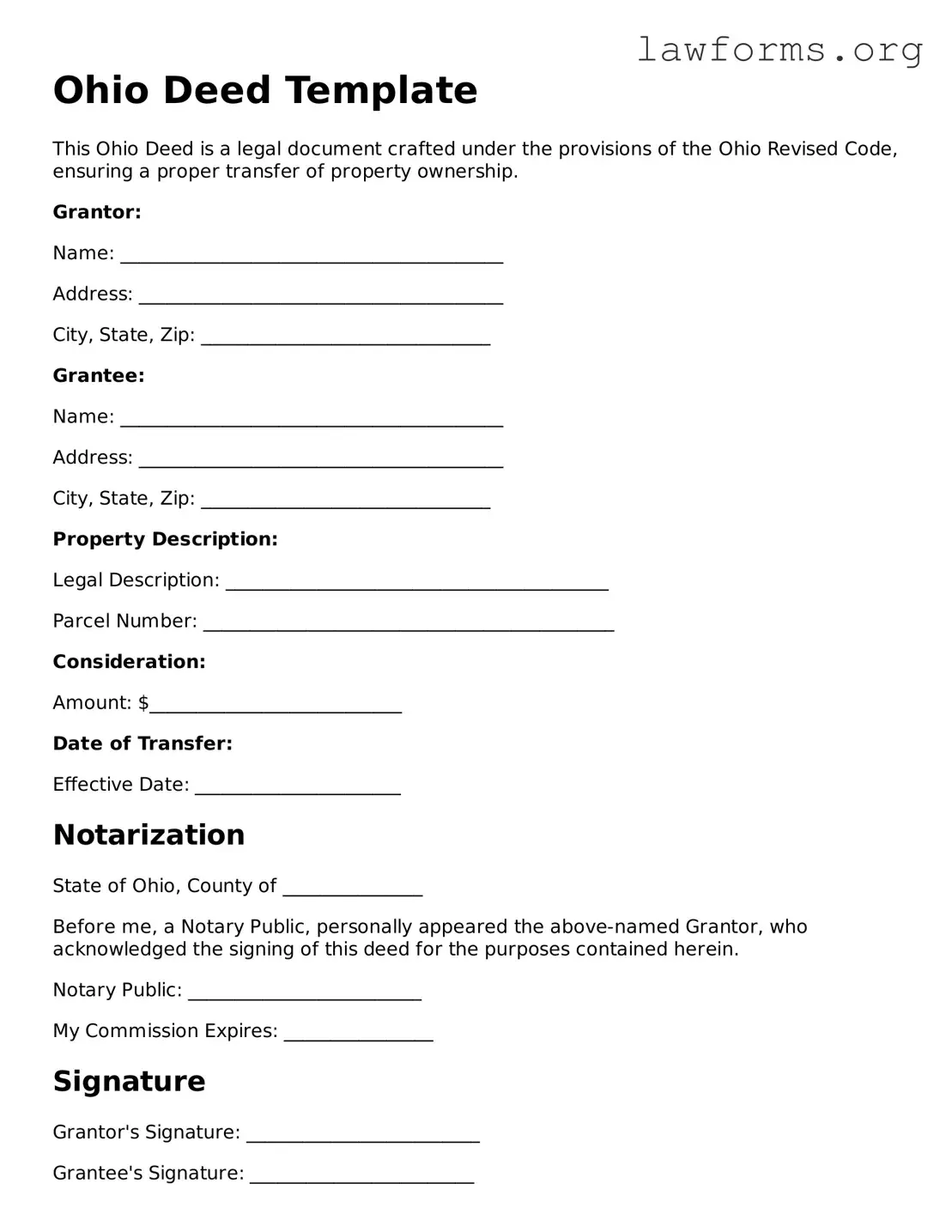Ohio Deed Template
This Ohio Deed is a legal document crafted under the provisions of the Ohio Revised Code, ensuring a proper transfer of property ownership.
Grantor:
Name: _________________________________________
Address: _______________________________________
City, State, Zip: _______________________________
Grantee:
Name: _________________________________________
Address: _______________________________________
City, State, Zip: _______________________________
Property Description:
Legal Description: _________________________________________
Parcel Number: ____________________________________________
Consideration:
Amount: $___________________________
Date of Transfer:
Effective Date: ______________________
Notarization
State of Ohio, County of _______________
Before me, a Notary Public, personally appeared the above-named Grantor, who acknowledged the signing of this deed for the purposes contained herein.
Notary Public: _________________________
My Commission Expires: ________________
Signature
Grantor's Signature: _________________________
Grantee's Signature: ________________________
It is important to ensure that this deed is recorded in the County Recorder's office where the property is located. This helps protect the rights of everyone involved in the transaction.
